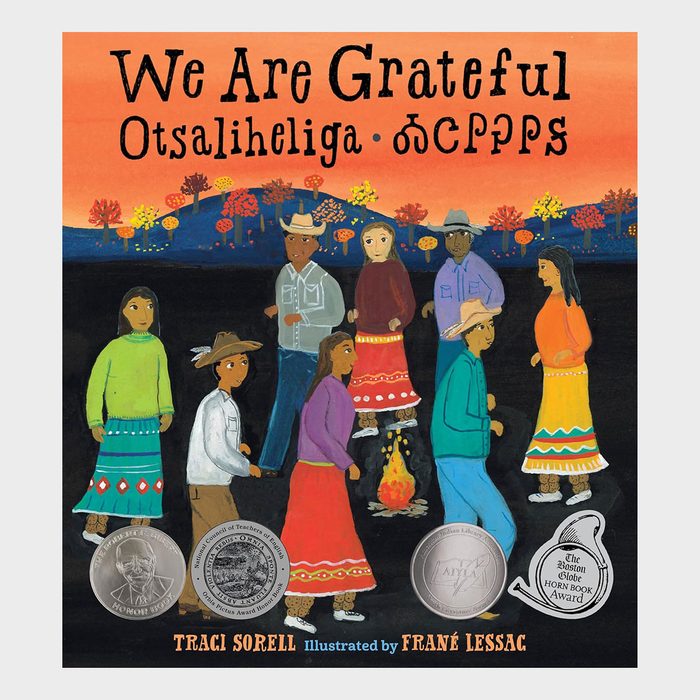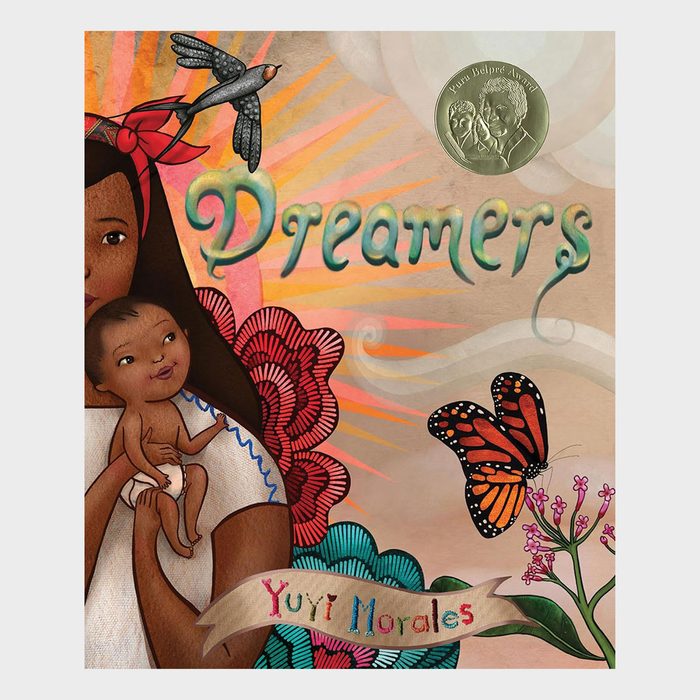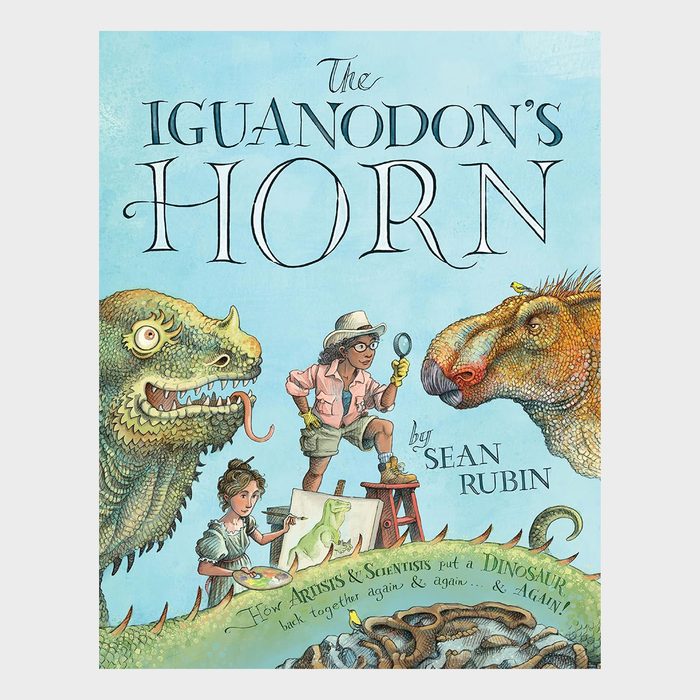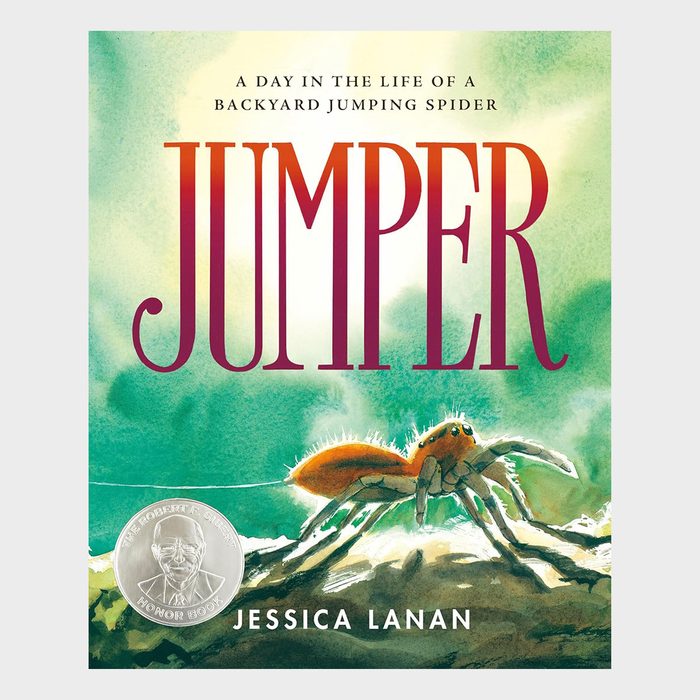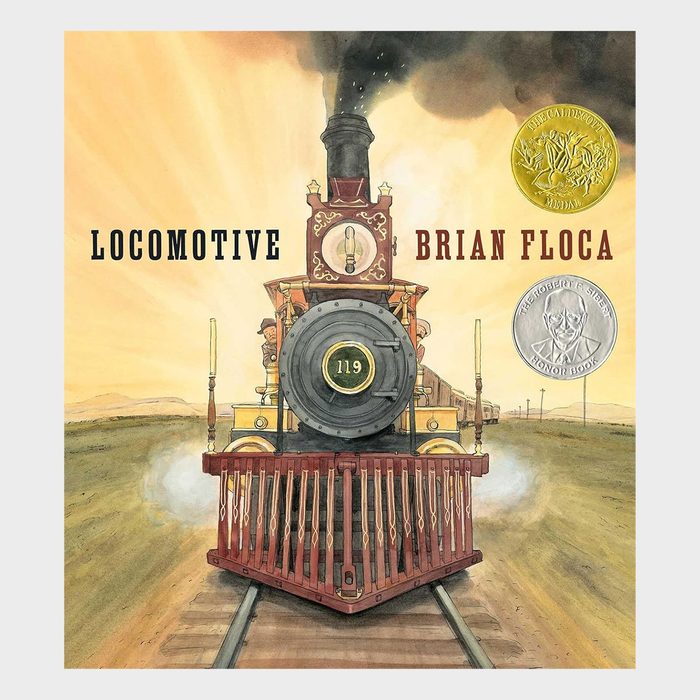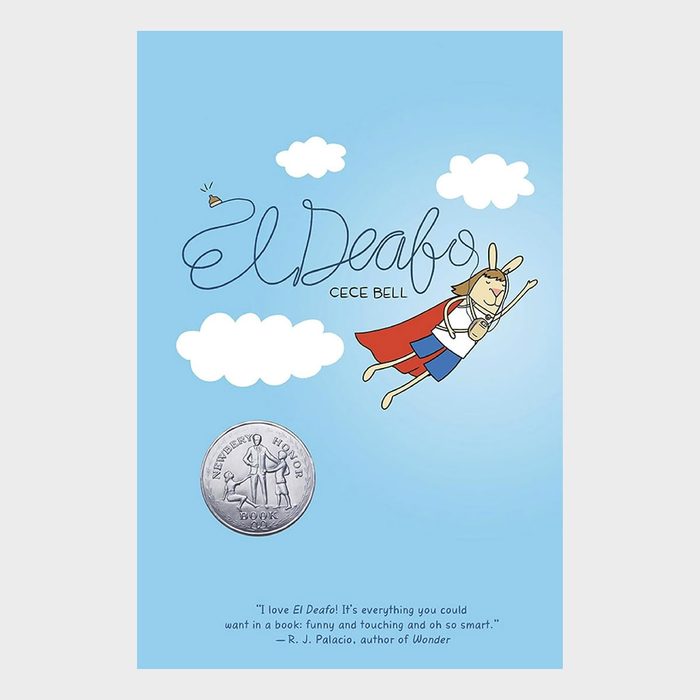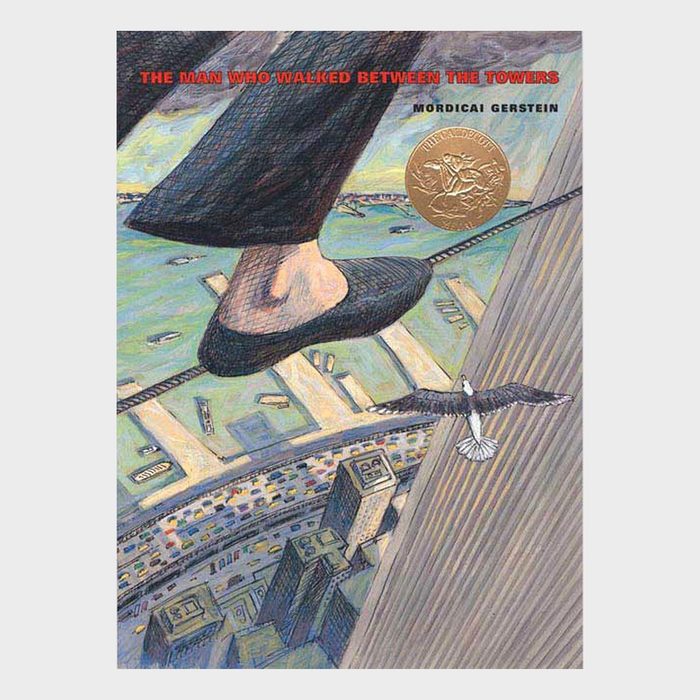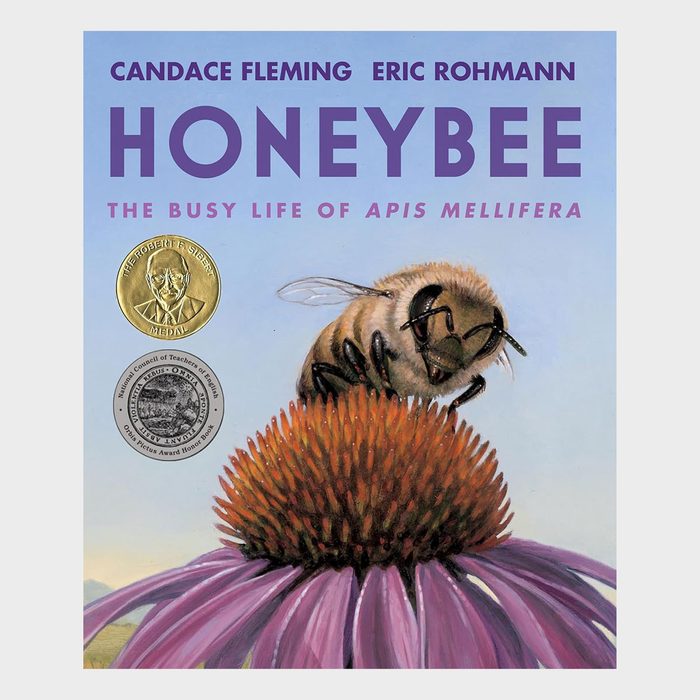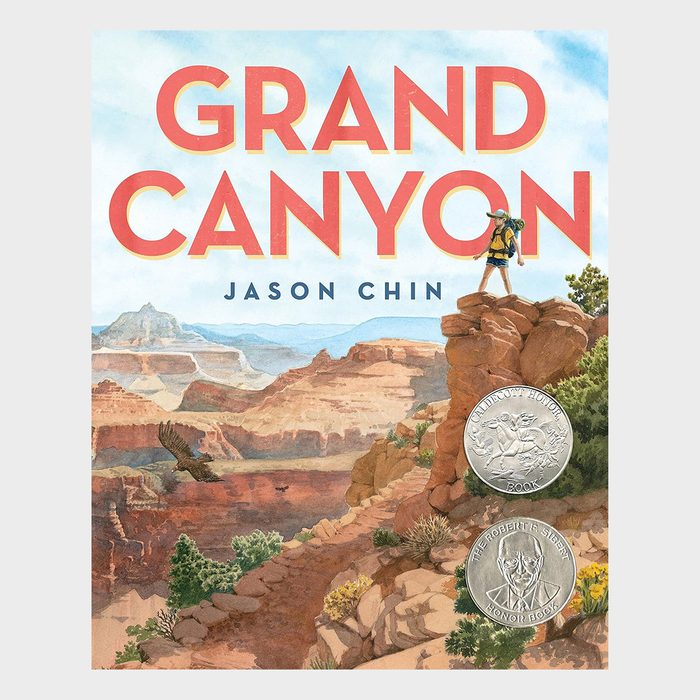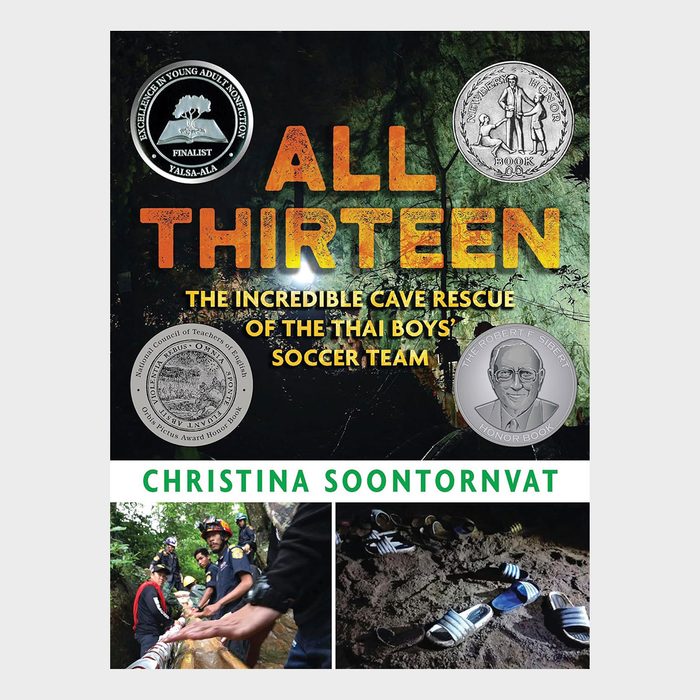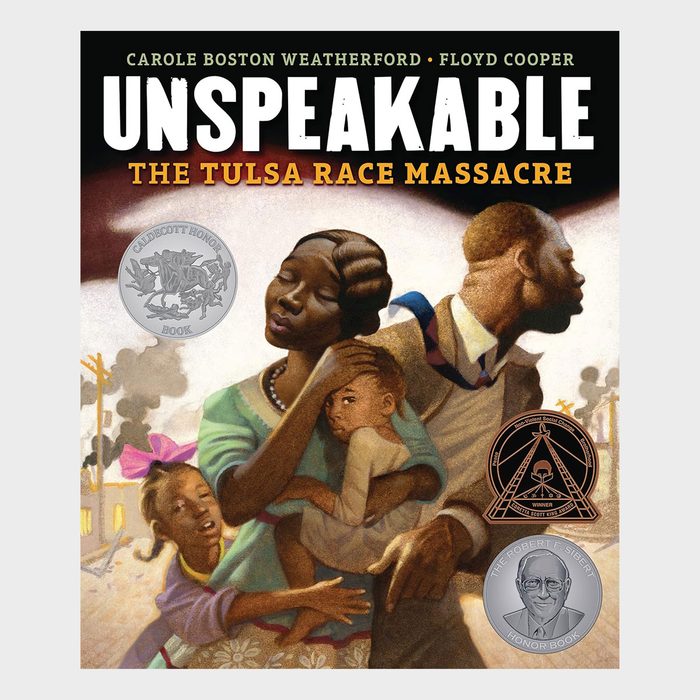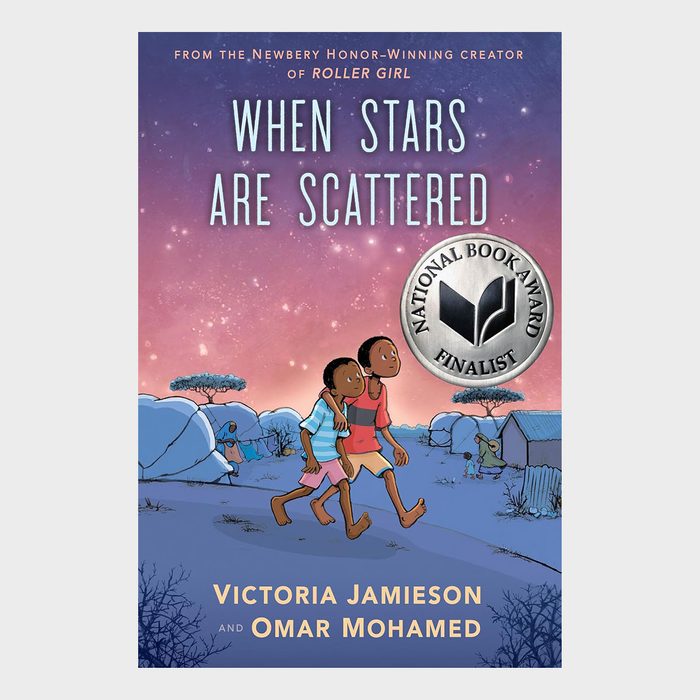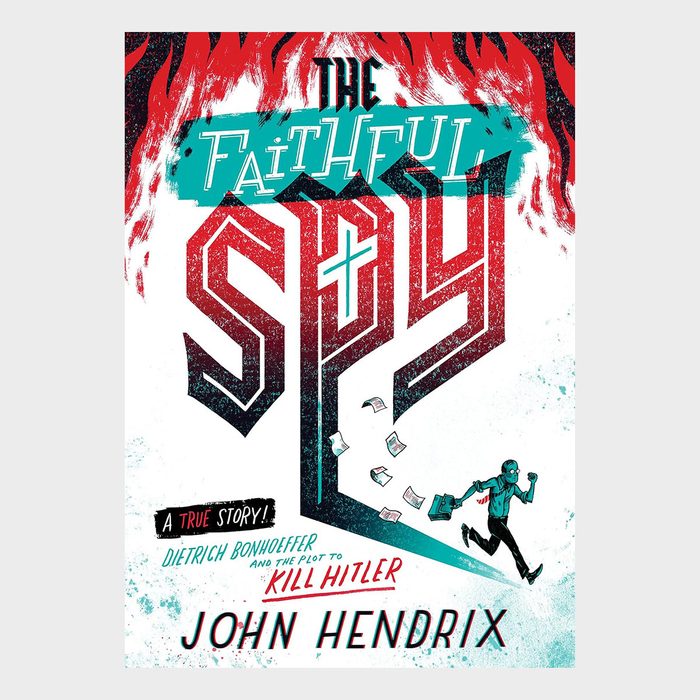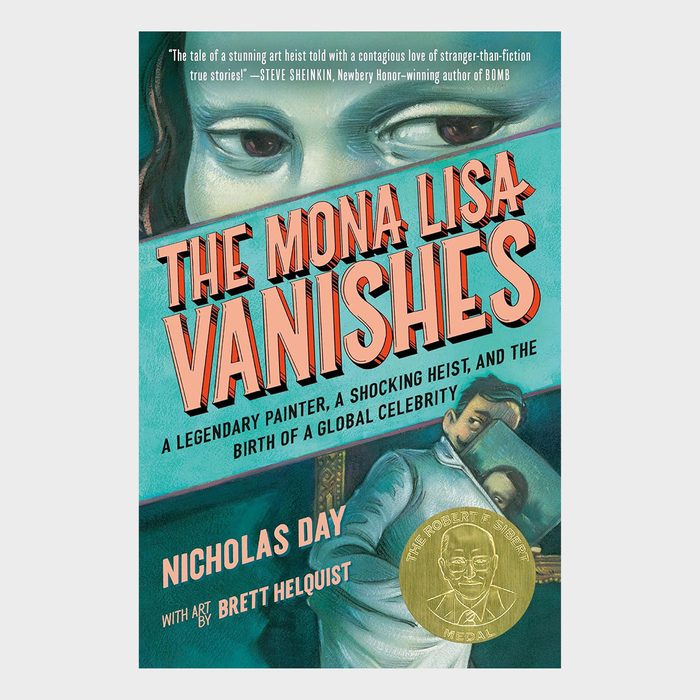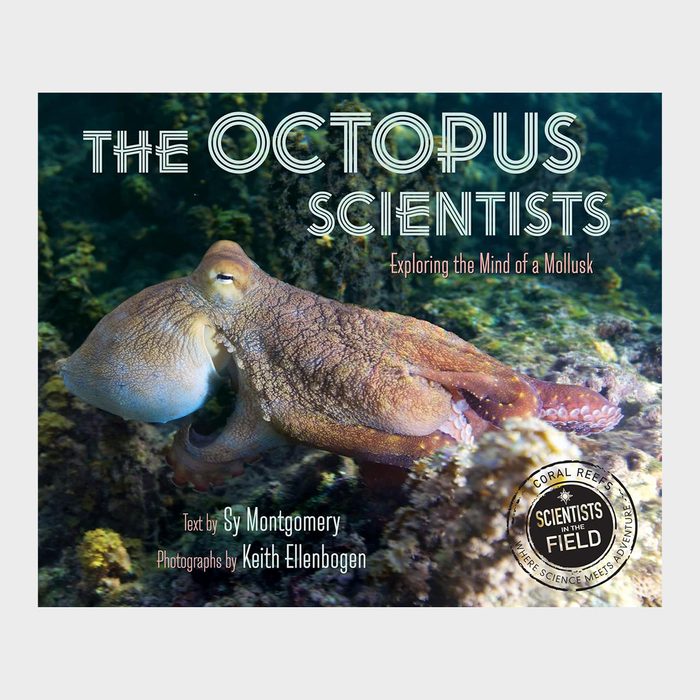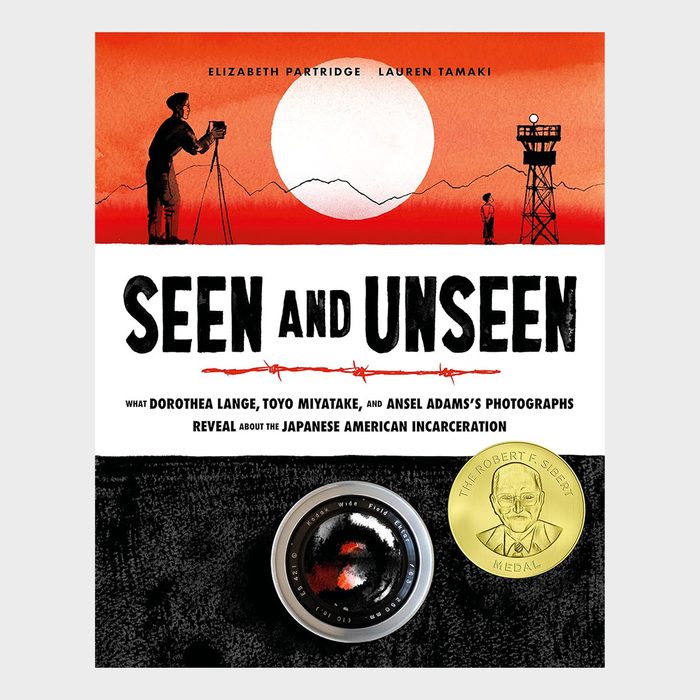Recommended for ages: 3+
The stunning 2022 alphabet book A Is for Bee is a visual feast that paints a fascinating layer over a traditional ABC book. A total of 69 different languages are represented as Ellen Heck pairs a letter with an animal and justifies that pairing by presenting the words for the animal in non-English languages. R, for example, stands for fox, as demonstrated by renard (French), róka (Hungarian), rubâh (Persian) and rovî (Kurdish). The featured letter is delicately incorporated into the illustrations, offering a seek-and-find experience for young readers. Named one of 2022’s best children’s books by the New York Times, this artful book demonstrates how everything is interconnected. And for any budding linguists out there, it provides fascinating insight into how language works.
Recommended for ages: 3+
We Are Grateful makes an excellent companion or counterpoint to the holiday books for kids you may already have. In her 2018 debut, Traci Sorell explains the importance of gratitude in Cherokee culture and the ways in which gratitude is expressed through the seasons. Cherokee words are presented throughout the text, and for those unfamiliar with the language who want to hear it out loud, the publisher’s website provides accompanying audio clips. Books by and for Indigenous people are still few and far between, and this Sibert Honor Book, which recognizes the best children’s informational books, is a great entry point that’s also an effective rebuttal to many Thanksgiving narratives. For your youngest readers, it’s available as a board book too.
Recommended for ages: 4+
Contemporary Hispanic author Yuyi Morales draws from her experience immigrating to the United States for Dreamers, her 2018 picture-book memoir, which combines poetic text with stunning and tenderly rendered mixed-media illustrations. The story itself follows Morales’s journey with her son to a new country, the difficulties and prejudices they faced there, the complications of a language barrier and the eventual hope they found in their local library. The Spanish words used throughout are easily decipherable in context for non–Spanish speakers, and a simultaneous Spanish edition, Soñadores, was also released. The winner of the Pura Belpré Illustrator Award, this is an enduring memoir for younger readers.
Looking for your next great book? Read four of today’s most compelling novels in the time it takes to read one with Fiction Favorites. And be sure to join the community!
Recommended for ages: 4+
It might be impossible to overstate how crazy kids go for dinosaurs, and no list of nonfiction books for kids is complete without at least one dinosaur book. While The Iguanodon’s Horn, released in March 2024, explores the fossils of an iguanodon with humor, it also provides sharp insight into the evolution of the scientific process itself. As scientific methods and knowledge grew, so too did our understanding of the life and appearance of this dinosaur. The text highlights the relationship between art and science so that the youngest readers will be fascinated by the artwork, while older ones will be inspired to dig even deeper.
Recommended for ages: 4+
The jumping spider featured in the pages of Jumper is startlingly adorable—even when she’s hunting—and will win the hearts of all but the most staunchly arachnophobic. Jumper’s morning begins in a community garden, and readers will follow her throughout her day, learning in both the text and in the fastidious back matter at the end of the book about her anatomy, life cycle and physical abilities. The energetic watercolor illustrations move the story along so quickly it reads like fiction. This 2024 Sibert Honor Book is a dream come true for fans of spiders, and it may even convince spider skeptics to give the critters a second glance.
Recommended for ages: 4+
What happens when a blue whale, the largest animal on Earth, dies—or, as it’s more appealingly called, falls? The answer should surprise and fascinate readers. Accessible text follows one blue whale through the years after her death as her body slowly sinks to the ocean floor. As it decomposes along the way, that body provides nourishment for creatures at every level; at the bottom, it creates an ecosystem that will last for over a century. There have been a few picture books about whale falls in recent history, but Life After Whale, just published in June 2024, is especially inventive. In Caldecott Medalist Jason Chin’s capable hands, the accompanying illustrations make it a can’t-miss.
Recommended for ages: 4+
It’s 1869, the Transcontinental Railroad is brand new, and a family journeys by rail from Omaha to Sacramento in this lauded picture book. There’s no shortage of children’s books about trains, but Locomotive combines poetically informative text with dynamic, multi-perspective illustrations for a truly immersive experience. The rhythm and pace make this a good pick for reading aloud, while the thorough back matter offers additional information for your curious older readers. Plus, it swept the 2013 best-of lists and received honors for multiple children’s nonfiction book awards, including Sibert and Orbis Pictus Honor Book. Need one more reason to pick this up? It was the 2013 Caldecott Medalist, which awards the best in illustration.
Recommended for ages: 5+
Despite the novel in its name, the graphic novel format isn’t strictly for fiction. In fact, the past few years have seen tremendous growth both in the availability of graphic novels and in the ways in which the format is used for nonfiction—including for graphic memoirs.
I could create an entire list dedicated to the graphic-novel memoir (there are two in this roundup!), but Cece Bell’s 2014 El Deafo, which focuses on the hearing aid she began using as a child that both opened up her world and isolated her from her peers, is one of the most notable. It topped best-of lists the year it was published and landed the 2015 Newbery Medal, considered the highest award for children’s books. It was also adapted into an animated miniseries for AppleTV+, so interest isn’t waning anytime soon.
Recommended for ages: 5+
Young readers today may have little frame of reference for the setting of Mordicai Gerstein’s 2004 Caldecott Medal book, The Man Who Walked Between the Towers, but the high-stakes drama will hook them nonetheless. Set in 1974, quite literally between the two towers of the World Trade Center, it tells the story of French high-wire artist Phillippe Petit, who performed on a tightrope between the roofs of the towers before their construction was complete. Gerstein’s dazzling use of perspective—and some dramatic foldout spreads—will entrance curious viewers. For older readers, a final image of the New York skyline as it is now adds an emotional layer.
Recommended for ages: 6+
I’ll admit: It was a real struggle to choose just one book from this author-illustrator (and wife-husband) duo. I’m partial to their 2016 Sibert Honor book Giant Squid, which has one of the best gatefold spreads I’ve ever seen. But Honeybee, their 2021 Sibert Medalist and an Orbis Pictus Honor Book, generated a ton of buzz (sorry, I had to say it!) about an essential creature. The book follows the life, birth to death, of one honeybee, articulating her life cycle, purpose and development in straightforward, declarative language. And don’t be disappointed—it’s got a pretty spectacular gatefold spread too.
Recommended for ages: 7+
It was similarly difficult to stick to one Jason Chin book (and I kind of cheated—he illustrated Life After Whale, above). You really can’t go wrong with any of them, so it might boil down to what your specific young reader is interested in. But 2017’s Grand Canyon, both a Caldecott Honor and Sibert Honor Book, deserves a special callout, as it takes readers on what essentially amounts to a visual hike around this “hole in the ground.” Creatively designed illustrations show the Grand Canyon’s evolution and vast variety, and the rereading value of this virtual travel book is next-level.
Recommended for ages: 8+
Older readers of this book might remember the 2018 event it recounts: A boys’ soccer team was trapped in a cave in northern Thailand for 18 days. Those who don’t will be no less drawn in. Christina Soontornvat’s 2020 All Thirteen is a sports story, a thrilling adventure, an investigation of a culture and a breakdown of scientific and technological rescue methods. Tautly written, the tense but inspirational book propels readers to the end, and Soontornvat seamlessly builds in layers of meticulous research, huge in scope, that add global perspective to the event. It was no surprise when it made a huge splash during the 2021 awards season with a Newbery Honor, a Sibert Honor and an Orbis Pictus Honor.
Recommended for ages: 8+
It’s probably best to keep an adult close at hand to answer questions about this heavy but essential picture book for older grade-schoolers. A standout title of 2021 from two already decorated collaborators, Unspeakable collected countless accolades (among them the Coretta Scott King author and illustrator awards, Caldecott and Sibert Honors, and National Book Award longlist) for its straightforward text and emotive illustrations. The story distills the complicated history of the Tulsa Race Massacre for a younger audience. An accompanying educator guide from the publisher will be profoundly useful to teachers and parents alike. It’s powerful and sensitive, an important read despite the fact that (or perhaps because) it’s become a banned book in some states.
Recommended for ages: 9+
In the 2020 graphic novel and National Book Award finalist When Stars Are Scattered, Omar Mohamed tells the story of his flight from Somalia with his brother, the difficulties they faced in a Kenyan refugee camp and his fight for an education. He’s aided capably by Newbery Honor creator Victoria Jamieson who, through warm and expressive artwork, brings this as-told-to tale to vibrant life. The brotherhood at this memoir’s heart will endear the book to young readers, while Mohamed’s forthright narrative provides a window into a reality that many Americans will have never seen. It’s a children’s book about diversity that helps explain racism to kids who may have never experienced it.
Recommended for ages: 10+
If you’ve seen the Oscar-winning film Oppenheimer, you probably know parts of this story, but you haven’t seen it told this way before. Published in 2012, this book’s list of accolades is a mile long—among them, it was a Newbery Honor Book and National Book Award finalist. Bomb is a piece of history that reads like fiction as Steve Sheinkin unspools the story of the creation of the atomic bomb, following not just the scientists who raced to be the first to make it (and the ethical dilemmas they faced) but also the spies who infiltrated the scientific community during its development. It’s a shocking and sobering glimpse into the climate of World War II.
Recommended for ages: 10+
If you’re looking for another WWII book, you won’t have to look far—it’s a popular topic. (In fact, you can just look at the previous book on this list!) But this illustrated biography of Nazi resistor and pastor Dietrich Bonhoeffer demonstrates the boundless creativity that’s possible in nonfiction books for kids. Supported by Bonhoeffer’s own writings, The Faithful Spy places Hitler’s rise to power alongside Bonhoeffer’s growing convictions that he must be stopped. Not quite a graphic novel—though it incorporates graphic novel panels, small spot art and full-page images—this 2018 release threads together text and artwork for a breathlessly dynamic experience.
Recommended for ages: 10+
Listen to me: The Mona Lisa Vanishes is fun. It was easily the most enjoyable book I read in 2023 (the 2024 Sibert committee agreed), and if we’re being honest, probably in the past few years. It’s the story of an art heist: In 1911 Paris, the Mona Lisa was stolen from the Louvre. Written like a thriller novel and as propulsive as one, the book intersperses the story of the painting’s theft and its aftermath with scenes from 1503 Florence, when an artist named Leonardo da Vinci begins painting a portrait. Black-and-white illustrations drive home the message and make this already compulsively readable book even more accessible.
Recommended for ages: 10+
If you’re looking for a book on animal science, look no further than Sy Montgomery—in particular, her contributions to the Scientists in the Field book series. Her 2018 entry, The Hyena Scientist, made me love hyenas (who would have seen that coming?), while 2021’s The Great White Shark Scientist undid a lot (like, a lot) of my Jaws-related shark fear.
The Octopus Scientists, which follows a team of researchers on a mission to study the mysterious Pacific Day octopus, is the pinnacle of Montgomery’s achievement. It’s hard to summarize their findings without making this 2015 book sound like pure fiction, but trust me: You will never look at an octopus the same again.
Recommended for ages: 10+
The 2023 Sibert Medalist Seen and Unseen sounds straightforward on the surface: It tells the stories of three photographers who documented the forced incarceration of Japanese Americans after the Pearl Harbor attacks. Two were white and free: Dorothea Lange, critical of the incarceration, and Ansel Adams, in favor and hired to show a curated image of life in the camps. The third, Japanese-born Toyo Miyatake, was imprisoned and had a friend smuggle in camera equipment in pieces so he could capture the real story. Not quite a graphic novel, this is a multilayered work of art, with the bittersweet story of resilience enhanced by luminous, emotive illustrations and recreations of photographs.
Recommended for ages: 12+
Though it’s billed for a slightly older group of readers, Don Brown’s Sibert Honor Book remains accessible for younger readers in large part because of its graphic-novel format. Published in 2015, a decade after Hurricane Katrina decimated New Orleans, Drowned City tracks the storm’s beginnings and reveals the errors that led to such a huge loss of life. The meticulous text is given haunting weight by the emotive artwork, which captures the scope of the disaster while keeping the impacts on individual humans at the forefront of every reader’s mind.
Get Reader’s Digest’s Read Up newsletter for more books, humor, cleaning, travel, tech and fun facts all week long.
Why trust us
At Reader’s Digest, we’ve been sharing our favorite books for over 100 years. We’ve worked with bestselling authors including Susan Orlean, Janet Evanovich and Alex Haley, whose Pulitzer Prize–winning Roots grew out of a project funded by and originally published in the magazine. Through Fiction Favorites (formerly Select Editions and Condensed Books), Reader’s Digest has been publishing anthologies of abridged novels for decades. We’ve worked with some of the biggest names in fiction, including James Patterson, Ruth Ware, Kristin Hannah and more. The Reader’s Digest Book Club, helmed by Books Editor Tracey Neithercott, introduces readers to even more of today’s best fiction by upcoming, bestselling and award-winning authors. For this piece on the best nonfiction books for kids, Maggie Reagan tapped her experience as an editor in the Books for Youth department of the American Library Association journal Booklist to ensure that all information is accurate and offers the best possible advice to readers. We verify all facts and data, back them with credible sourcing and revisit them over time to ensure they remain accurate and up to date. Read more about our team, our contributors and our editorial policies.























